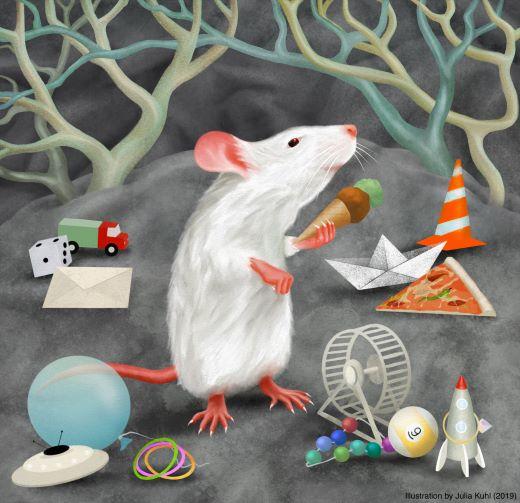Abstract:
Categorization is a fundamental cognitive process by which we classify and rapidly generalize learned and novel information. But how are category-defining associations represented in the brain? Using a new paradigm for studying category learning in mice, we investigated how the representation of a learned category in the mouse prefrontal cortex emerges over time. In a subsequent study, we traced the effects of category learning back to higher visual area POR and identified a possible mechanism by which sensory neurons can acquire category selectivity. The identification of neuronal circuits and computations underlying learned categorization in mice can ultimately provide new insights into the basic implementation of associative memory in the brain.

A mouse categorizing objects based on their perceptual features (illustration by Julia Kuhl, 2019)
Biography:
Pieter Goltstein is a postdoctoral researcher working with Mark Hübener and Tobias Bonhoeffer at the Max Planck Institute for Biological Intelligence in Munich. During his postdoc he developed paradigms for studying category learning in mice, with the goal to investigate neuronal mechanisms of semantic memory. Pieter has a Bachelor and master’s degree in psychology and obtained his PhD degree in Neurobiology at the University of Amsterdam, investigating effects of learning and behavioural state on primary visual cortex.
This is an hybrid seminar.
Click here to register via Eventbrite.
